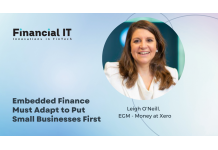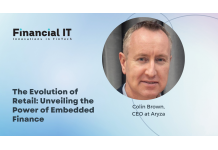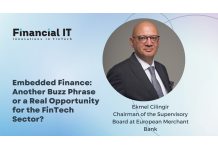How Embedded Finance is Supercharging Loyalty

- Kim Van Esbroeck, Country Head for Aion Bank Belgium & Chief Revenue Officer at Vodeno/Aion
- 15.05.2023 04:00 pm #embeddedfinance
Loyalty schemes need no introduction; some of the earliest schemes date back as far as the 1700s, where customers could redeem copper tokens to discount their purchases, while modern schemes designed to acquire data emerged in the 1980s with frequent flyer programmes.
Today, these schemes remain a popular way to cultivate brand loyalty; as many as 84% of consumers say they’re more likely to stick with a brand that offers a loyalty programme, while a further 66% say that the ability to earn rewards changes their spending, showing the impact that a well-executed loyalty program can have on a business’s output.
Although running a successful business is often a battle to retain customers and inspire repeat business, loyalty schemes have not really been disrupted since their inception. This is despite the fact that consumer expectations are shifting, with almost two-thirds of consumers saying their loyalty is more difficult to maintain than ever before due to the cost-of-living crisis, and a further 79% indicating they don’t want to just accumulate points anymore.
In a competitive marketplace, brands are looking to innovate their loyalty programmes in order to offer real value and drive true loyalty and are increasingly turning to embedded finance as the answer.
Why many brands are failing at loyalty
At least in part, the challenge many businesses face with building and maintaining loyalty among their customers is offering real, tangible benefits. Given today’s financial challenges, consumers are more likely to engage with brands that help them save. According to research, 90% of consumers say that, because of rising prices, they are more interested in getting discounts, using coupons and earning cashback rewards when they shop.
Adding to this, a Capgemini study showed that 63% of customers prefer loyalty programs that offer exclusive access to products, sales and premium services. Further research has uncovered that 68% of respondents would join a customer loyalty program for brands they like, while 56% are willing to spend more with a brand even if cheaper options exist.
Embedded finance and loyalty
Loyalty programmes are the perfect use case for embedded banking; powered by BaaS, brands can integrate their existing programmes with payment solutions that allow customers to immediately earn rewards or cashback when making purchases with their loyalty card or app.
For example, Target's REDcard program offers shoppers instant 5% cashback on all purchases, making it easy for customers to earn rewards that help them save. The results of the scheme are clear: Target found that cardholders increased their shopping carts by 50%, with REDcard spending contributing to over $8.9 billion in volume annually and 12.1% of all Target sales. The addition of embedded payments into Target’s existing loyalty programme highlights how BaaS can have real impact on customer loyalty.
Starbucks’s rewards platform is another example of embedded finance fostering loyalty. It allows customers to load funds into their Starbucks account and earn rewards, pay in-store and pre-order food and coffee using their smartphone. Today, users of Starbucks’s rewards platform have more than $1 billion of funds stored by users within the platform – in context, that’s more than 85% of US banks have in assets.
Additional BaaS products like flexible lending products such as Buy Now, Pay Later (BNPL) can also be seamlessly integrated into loyalty programmes, offering customers more choice at checkout. Research indicates that eCommerce retailers who offer BNPL enjoy a 20-30% increase in conversion, demonstrating the effectiveness of these products in driving sales.
A new approach to loyalty
Brands that have adopted embedded banking products have already experienced the positive impact on their customer journey. Now, they are discovering how BaaS can also innovate their loyalty programmes. In a crowded marketplace where players are competing for consumer attention and limited spending budgets, embedded finance can make all the difference between a winning loyalty solution and those that fall short.
























